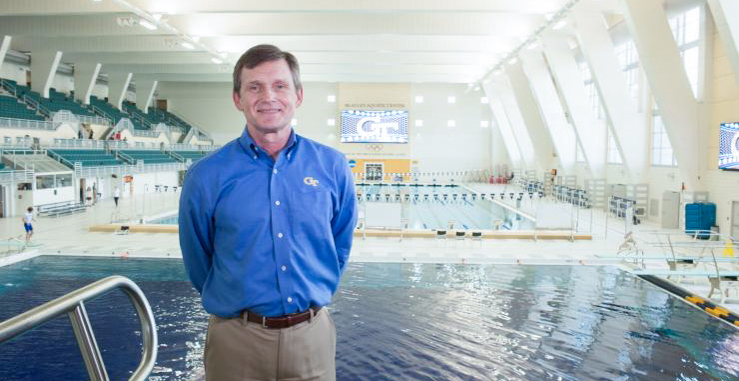After 28 years at Tech, senior director of the Campus Recreation Center (CRC) Michael Edwards has officially entered retirement.
Edwards was first recruited by Patrick Crecine, the former president of the Institute, in preparation for the 1996 Olympic Games in Atlanta. He spent his first 12 years working in capital planning and space management until Wayne Clough, the 10th president of the Institute, hired him as the director of the CRC.
Prior to arriving at Tech, Edwards served as a diving coach at Syracuse University and later managed a sports complex similar to the CRC at Indiana University–Purdue University Indianapolis (IUPUI).
Although Edwards ended up working in primarily recreational planning, he initially aspired to go into teaching and coaching football. However, when Edwards struggled to find opportunities in these fields, he turned to sports and recreation.
“I never really saw myself in any of these positions,” Edwards said. “But when I had the opportunity to mentor young professionals, it was about taking advantage of opportunities that presented themselves and sometimes their risky propositions.”
Nonetheless, Edwards tackled many challenges throughout his career which earned him a well-known reputation as a leader in the world of campus recreation. Over the years, he has contributed to three different Olympic games: the 1984 Summer Olympics in Los Angeles, the 1996 Summer Olympics in Atlanta and the 2002 Winter Olympics in Salt Lake City. In addition to the Olympic games, Edwards has also worked on the 1987 Pan American Games in Indianapolis and multiple national and international championships.
To the Tech community, however, Edwards will always be remembered as the man who built the CRC, a campus center like no other when it was first came to fruition. Upon completing his two-year term with the Olympic Committee as the venue manager of the aquatic center, Edwards returned to Tech and placed his focus on creating the new recreational center.
“My assignment, which was always the plan, was to build a recreation center around the Olympic Aquatic Center. That’s really why the Olympic product center was built in the first place — to be an anchor for the development of athletic and recreational facilities on campus,” Edward said.
This plan took years to develop and execute, with the CRC team facing obstacles like utilizing the aquatic center’s existing infrastructure and footprint of the land surrounding it. Eventually, once the CRC was constructed, it became known as an “engineering feat,” according to Edwards, referring to the unique post-tension concrete and bridge technology that made the construction of the gym over the aquatic center possible.
“It was those kinds of things — the problem solving and the excitement of being able to do something that others have not done, things that others said couldn’t be done — those are the kinds of things that keep you coming back,” Edwards said.
Despite leading the development of one of the most notable landmarks on Tech’s campus today, Edwards is most proud of the work he has done with his CRC team to serve the community’s physical and mental health, especially for students.
“We had a lot of accomplishments over my 28 year period of time,” Edwards said.
“But the accomplishment of building a structure and department that can truly have a lasting impact on the health and well being of the overall Georgia Tech campus community is what is so important. I think we sometimes overlook that.”
Edwards explained that data gathered from a 10 year longitudinal study conducted with the CRC shows that students who frequent the CRC two to three times a week have a higher GPA, retention rate, and graduation rate than those who do not go to the CRC.
“Social connectedness is part of the CRC. Sense of community is part of the CRC. Physical activity is part of the CRC, and those are three components to help with the number one and number two, mental health issues on any campus … depression and anxiety,” Edwards said.
During Edwards’s time as director, the CRC also began a collaboration with the Counseling Center and the Center for Assessment, Referral and Education (CARE) called Healthy Minds. The program aims to promote a healthy, active lifestyle by focusing on five dimensions of well-being: physical, emotional, social, spiritual and professional.
“The CRC is the cornerstone of a thriving and active health and well being community,” Edwards said.
“To have the opportunity to impact the health and well being of thousands of students is what I would say is one of my proudest accomplishments.” After creating such a lasting legacy on Tech’s campus, Edwards decided that it was time for him to step down from his role and let others take the reins, but he does not plan on slowing down completely.
“I am retired from Georgia Tech, but I don’t intend to retire from life or my professional career,” Edwards said. “I still want to have involvement in things, whether that’s something is at Georgia Tech or whether it’s on a national level.”
For now, Edwards looks forward to presenting and speaking at conferences in the upcoming fall as he moves onto the next chapter of his life.
